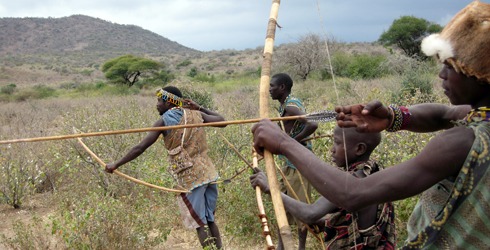The Hadza people, one of the last remaining hunter-gatherer tribes in Africa, have inhabited the regions around Lake Eyasi in Tanzania for thousands of years. Their unique language, culture, and way of life offer a glimpse into humanity’s ancient past and present critical lessons on sustainable living and resilience.
Historical and Cultural Significance
The Hadza are believed to have descended from one of the earliest groups of humans, making their lineage a living connection to the dawn of humankind. Unlike most other indigenous communities, the Hadza have managed to maintain a way of life that is largely unchanged for millennia. They continue to rely on foraging, hunting with handmade bows and arrows, and gathering wild fruits, roots, and honey.

The tribe’s social structure is egalitarian, with minimal hierarchy and shared responsibilities between men and women. Hunting is primarily conducted by men, while women gather edible plants and tend to children. Their cohesive social bonds and communal lifestyle have been pivotal in their survival.
The Hadza Language
The Hadza language is an isolate, meaning it is not related to any other known language, which underscores its uniqueness and historical importance. Featuring distinct click sounds found in some Khoisan languages, the Hadza language has insights into ancient linguistic practices. Linguists have studied the language extensively to understand its potential connections to early human communication, though definitive links remain a mystery.
However, like many indigenous languages worldwide, the Hadza language faces challenges. With the tribe’s population estimated to be between 1,000 and 1,300 people, the preservation of their linguistic heritage is at risk due to external pressures and decreasing numbers.
Challenges in the Modern Era
The Hadza’s traditional way of life is increasingly threatened by external factors, including land encroachment, climate change, and economic pressures. The expansion of agricultural land and the encroachment by neighboring communities have reduced the availability of wild game and foraging areas essential for their survival. These challenges pose significant risks to the tribe’s self-sufficiency and cultural preservation.
Various NGOs and advocacy groups have stepped in to assist the Hadza in maintaining their rights to ancestral lands and resources. Initiatives focused on community empowerment and sustainable coexistence have provided some support, but the pressures remain formidable.

The Path Forward
Efforts to support the Hadza often center around raising awareness of their plight and promoting eco-tourism initiatives that allow visitors to learn about and appreciate the Hadza culture. Such projects not only help generate income but also encourage cultural exchange and respect for their heritage.
Preserving the Hadza way of life and language is not just about maintaining one tribe’s identity; it is about recognizing and valuing the diverse heritage that humanity shares. The Hadza remind the world of a simpler, peaceful existence deeply connected to the environment—a culture that holds increasing relevance in today’s world of climate crises and environmental wellness.
Conclusion
The Hadza tribe of Tanzania embodies resilience and a profound connection to nature that has endured through millennia. Their language and way of life, though endangered, continue to inspire conversations on sustainable living and the preservation of cultural diversity. Ensuring the survival of their unique heritage is a step towards honoring not only their legacy but the shared roots of all humanity.
